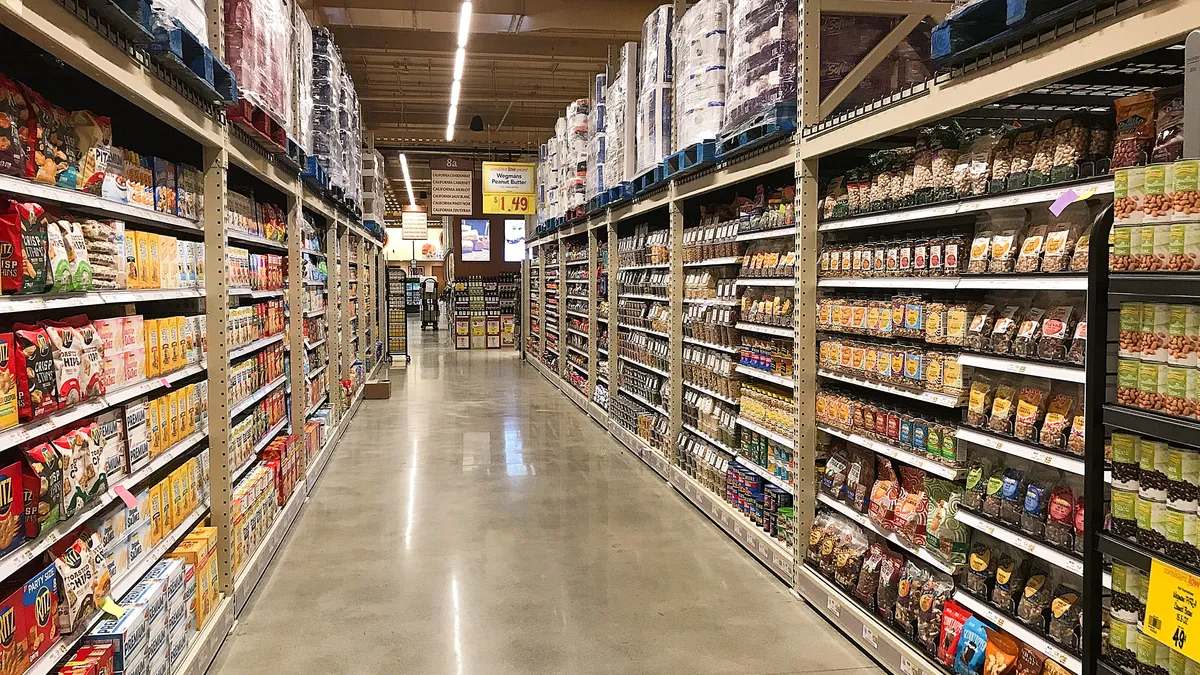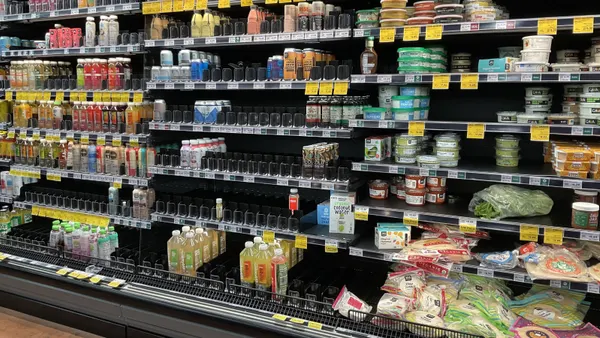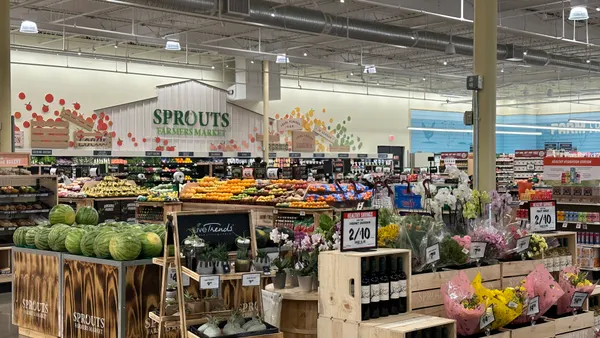Dive Brief:
- The pandemic accelerated the consumer shift toward smaller manufacturers, as big companies struggled to meet demand and shoppers tried smaller or niche brands, according to new research from IRI. This allowed smaller CPGs and private label to gain 1.3 points in share, or $12.1 billion in sales, marking the fifth consecutive year that large manufacturers have lost market share.
- Smaller brands accounted for about one-third of the 10.3% in growth the CPG industry saw last year. Private-label products represented about 18% of growth. Combined, they captured more than 34% of total CPG growth in 2020.
- Smaller manufacturers did especially well in the alcohol, frozen food and center-store food categories, according to IRI. With consumers spending more time at home, small CPGs with offerings in breakfast, frozen fruit, snacks and shelf-stable products also saw growth.
Dive Insight:
A combination of unlikely forces last year — including supply constraints and retail channel shifts amid the pandemic — gave small and private-label manufacturers a big boost to their momentum. While those factors are fading in 2021 and large manufacturers are expected to regain some ground, the growth of smaller players will not disappear.
Small manufacturers, which IRI defined as companies with annual sales of less than $1 billion, had already been gaining share from larger ones for years. But a golden opportunity appeared at the onset of the pandemic when large CPGs were unable to keep up with the surge in demand, especially in the second quarter. Smaller players seized this opportunity to fill the gap and brought in new customers, especially as buying habits changed, according to IRI. Private-label products also became more attractive to consumers who were looking to save money or needed an alternative when brand names were out of stock.
Smaller brands also benefited as the pandemic dragged on and buyers were looking to change up their at-home menu. And they picked up sales as consumers took more time to eat breakfast, giving them the opportunity to discover niche brands.
The shift toward smaller manufacturers was also driven somewhat by e-commerce. During the pandemic, customers were more willing to buy shelf-stable food and beverage products online, and IRI’s analysis shows that smaller brands grew much faster than large ones in this channel.
As the pandemic eases and consumer mobility increases, IRI expects larger manufacturers to gain back share thanks to retail channel shifts. The convenience store channel, which is dominated by large manufacturers, has lagged others in growth over the past year as automotive travel slowed. This factor alone accounted for a loss of 0.5 share points for large CPGs in 2020. But IRI expects the convenience channel to recover in 2021. Also, consumers will be able to eat outside of the home more often and could return to their earlier shopping behaviors.
Even so, IRI expects to see small players continue to chip away at larger brands’ market share. That could be particularly true for the $90 billion-plus private-label category, which gained a real foothold in 2020. IRI estimated the segment to grow between $10 billion and $12 billion in 2020.
That said, growth rates across the entire CPG industry will most likely slow in 2021, unable to beat the explosive sales increases of the early pandemic. This is even as analysts expect consumers to return to pre-pandemic eating and buying patterns.














